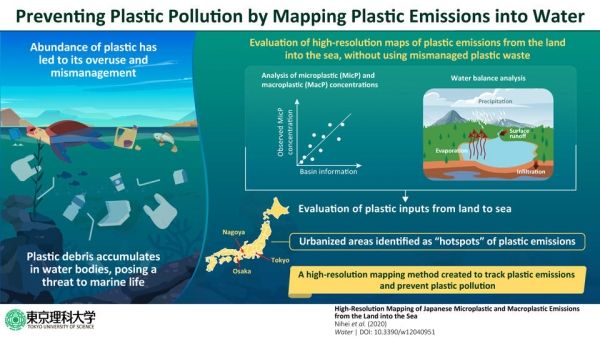Plastic waste often ends up in river bodies and oceans, posing a serious threat to the marine ecosystem. To prevent the accumulation of plastic debris, we must find out where plastic emission is prevalent. To this end, scientists in Japan have come up with a new method to track plastic emissions from inland areas to sea. This method is useful to identify the "hotspots" of plastic emission and can even help to implement appropriate measures to avoid plastic pollution.
Plastic may be an indispensable part of our daily lives, but its robustness and abundance have led to its overuse, putting a huge burden on the environment. Large emissions of plastic waste result in its accumulation in water bodies: in fact, recent studies have estimated about 0.27 million tons of plastic floating in the world's oceans. Because plastic does not decompose in water, it is a serious hazard for the marine life. Thus, to prevent plastic pollution, it is crucial to understand exactly how plastic is emitted into the oceans. Previous studies have tried to analyze plastic emissions, but they had some limitations: they focused on mostly mismanaged plastic waste and not how these plastic emissions actually originate.
To this end, a group of scientists at the Tokyo University of Science, led by Prof Yasuo Nihei, developed a new method to combat plastic emissions. In a study published in Water, they generated a "high-resolution map of 1 km grids of plastic emissions across Japan. Prof Nihei explains, "If plastic waste continues to flow into the sea, the amount of plastic waste will increase. To prevent this, it is necessary to clearly indicate where and how plastic debris is currently being generated."
Continue reading at Tokyo University of Science
Image via Tokyo University of Science


